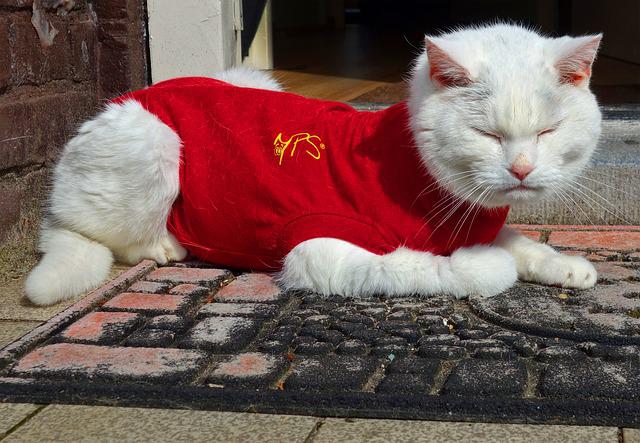What is Dexamethasone Used For in Cats?
Dexamethasone is used as a medication in humans and animals as well. You might know it by its market names such as Azium, Decadron, Dexasone, Neoforde, and much more.
The reason it goes by so many names on the market is that it is a fairly common glucaticoid steroid.
This formula- Dexamethasone- is used to treat a number of maladies and diseases, such as inflammatory conditions, adrenal gland disease, and autoimmune diseases.
A non-conventional use of dexamethasone is its use in the diagnosis of Cushing’s disease – a form of a genetic disorder. This is also considered a non-conventional approach to diagnosis, but it shows success.
However, dexamethasone is a common medication that can easily treat infection and inflammation in cats.
Veterinary Use
Dexamethasone was not originally intended to be used for animals. The drug was a prescription for humans; therefore, it is used as an off-label or extra-label in animals.
The drug is used as an extra label for cats, dogs, and other small mammals. Much like its unexpected use in the diagnosis of Cushing’s disease, it is also used in veterinary practice.
The drug has a wide umbrella in which its action is prescribed, which is explained in detail further on; so, it is a common drug in veterinary medicine.
Especially used for inflammatory conditions, where this drug helps bring the inflammation down in animals.Â
Since this drug is an off-label/extra-label it is strongly advised that it must be used at only the veterinary practitioner’s discretion and advisement.
Furthermore, dexamethasone has some side effects that must be researched before applying the dose. If your
Mode Of Administration
This drug is administered to cats in a variety of ways depending solely upon where the infection or inflammation is located inside the body.
Most commonly, it is administered as liquid syrup or via a tablet through oral use. This mode targets non-localized infections and difficult to detect inflammation.
The second method is via injection. The drug is injected into your
There is also an aerosol spray available for dexamethasone if the infection or inflammation is present in the respiratory tract. In this method the aerosol solution containing dexamethasone is sprayed into the opening of the respiratory tract -i.e., the nose and mouth- at prescribed intervals.
Lastly, for infections and diseases of the eye, dexamethasone can be applied topically as well. In pets, it is extremely difficult to administer some of these methods, therefore you should let your veterinarian perform the procedure.
For easier methods, such as oral tablets, you can give doses with food or treats. The drug can be given with or without food but it is preferred that it is given along with food.
Dexamethasone takes roughly 12 hours to work, and if your pet has been taking it for 2 weeks straight you must not stop administering it abruptly.
It is difficult to see our pets in pain, especially since you are often unable to figure out the cause of this pain. It is usually due to some infection or inflammation that your
Dexamethasone In Cat Diseases
Dexamethasone is shown to have a particular benefit in alleviating shock due to infection in cats. It also helps release endotoxins to speed up your pet’s recovery time.
Dexamethasone is a common prescription drug for cats in the treatment of cancer, gastrointestinal disorders, nervous system abnormalities, liver disorders, and skin diseases.
Normally, cats, much like humans, have safeguards inside their immune system that protect them against infection. However, sometimes inflammation due to untreated infections can progress faster than the immune response. This progress can severely damage tissue and organs in your
Similarly, another common problem in house-bred and domesticated cats is the risk of autoimmune disease. In the case of autoimmune disease, your
So, veterinarians use drugs that are from the family of steroid hormones resembling cortisone to treat infection and inflammation due to autoimmune diseases.Â
Dexamethasone is a steroid that is related to cortisone, that is produced by the adrenal gland. Since the drug is fairly common and easily accessible, it is the first choice in veterinary use. Dexamethasone is the perfect steroid glycation resembling cortisone for the treatment of cats.
It is a fairly safe formula to use, but cats with hypersensitivity or allergy to the formula must not be administered dexamethasone.
Similarly, a veterinary practitioner needs to administer the drug.
Common side effects of dexamethasone include vomiting, panting, sweating, increased appetite, increased thirst, and general uneasiness in cats. In case of grave concerns, your veterinarian must be contacted immediately.Â
In the situation that your
Your veterinarian will also inform you of the common contradictions and reactions to other drugs that are common to dexamethasone, so it is best that you give an extensive medical history of your
Read more: Albendazole for cats
Conclusion
Dexamethasone is an easily accessible formula present in the market by different brands and is a common steroid resembling adrenal gland cortisone.
It is an off-label drug used in veterinary medicine and used to treat a variety of conditions in cats ranging from cancer to common respiratory infections. It is also used in the treatment of dogs and other small mammals.
Dexamethasone can be administered in multiple ways, but it is strongly advised that a veterinarian should administer the dose.Â






